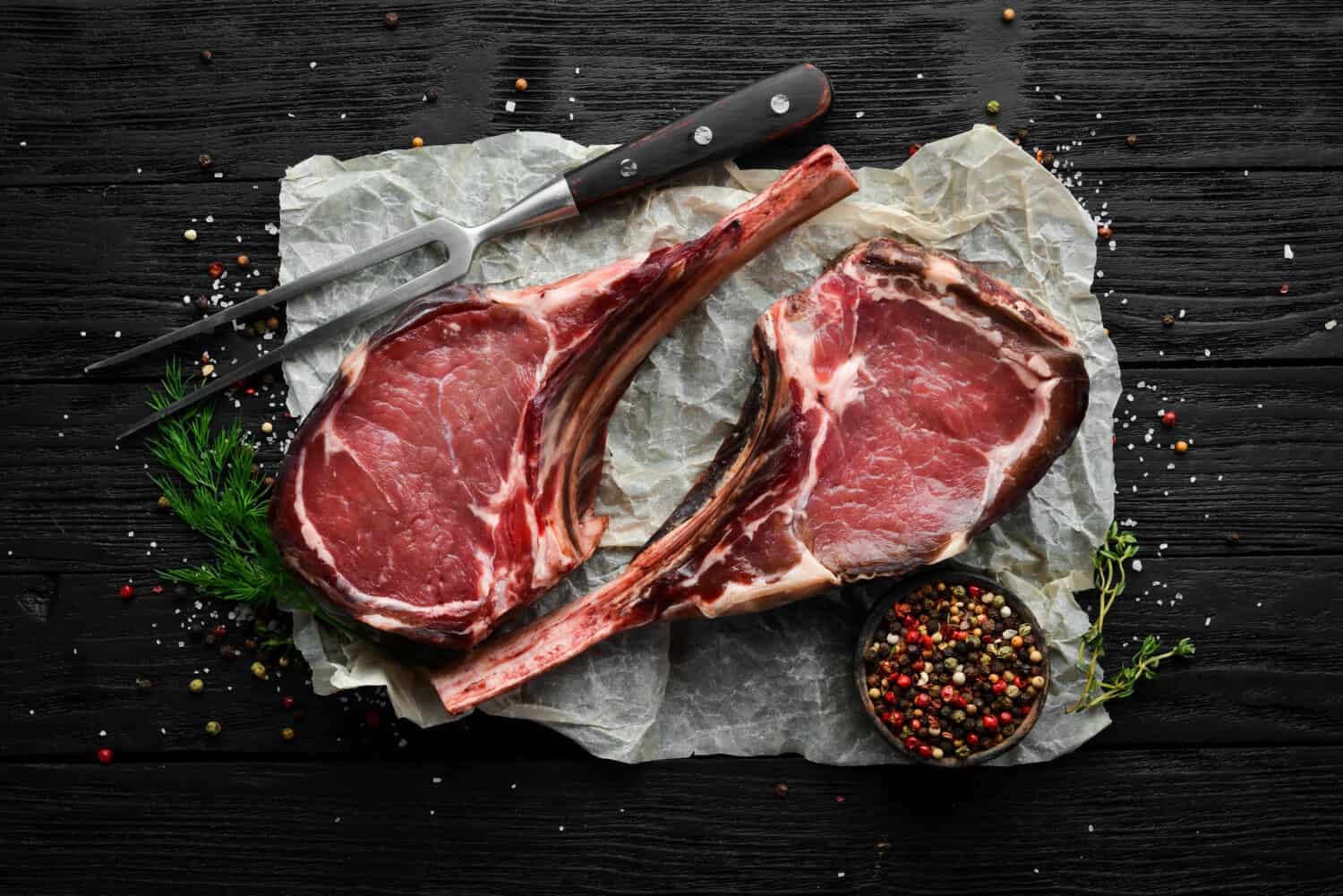When it comes to cooking and BBQing meat, beef and steak are two terms that often come about. Beef and steak are two terms that many people think are one and the same. Many people will use them both, not knowing that there are some differences between the two terms. In fact, beef and steak are not always to be used interchangeably. There are slight differences between beef and steak that many chefs, home cooks, and meat-eaters should know.
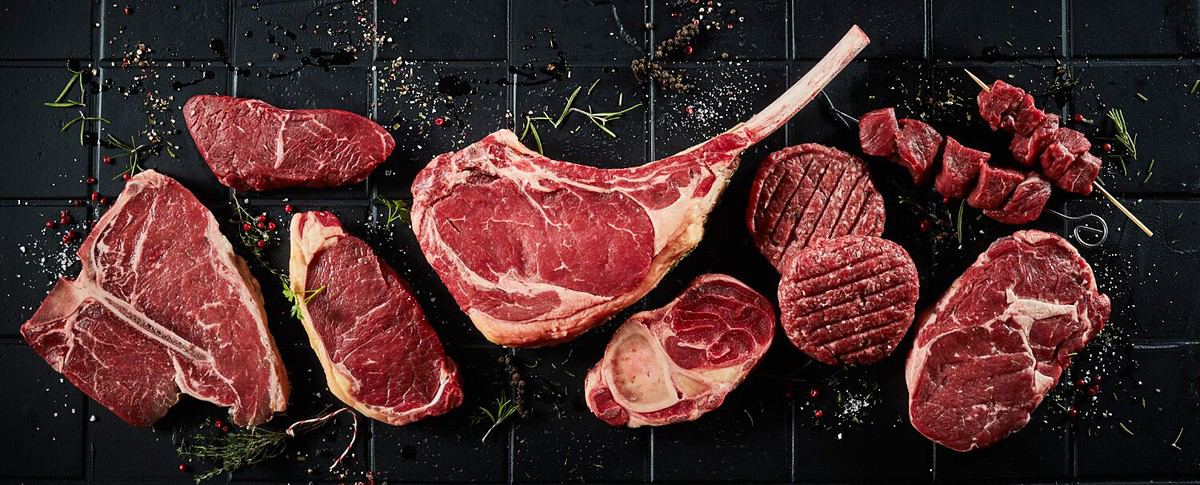
There are several different types of steak that can be purchased.
©stockcreations/Shutterstock.com
What is Beef?
Beef means that the meat has been cut from cattle. This is essentially a cow. In many parts of the world, beef is a staple of the everyday diet. It can be any part of the meat that is from the cow. Beef is the third most popular meat in the world, behind chicken and pork. However, there are many different places around the world where beef is the staple food due to religious restrictions. In some countries, like India, beef is not consumed much due to the fact that cows are considered sacred.
The History of Beef
Beef has been eaten for years, all the way back to the prehistoric days when hunters and gatherers were looking for food to feed their families. Many historians share that beef was consumed all the way back to 8,000 B.C. Cows and other cattle were brought worldwide as many conquerors and explorers tackled new lands. Through Mexico, Spanish explorers brought cows to America from Europe. Christopher Columbus was one of the explorers to help bring this animal to “The New World.” Today, there are many different ways that cows and cattle are raised. Some places have a factory, while others have grass-fed products.
Different Types of Beef
Aside from typical cuts of steak, there are many different ways in which beef can be packaged, produced, and cooked. There are typically eight main cuts of beef from a cow.
- Chuck
- Rib
- Loin
- Round
- Flank
- Short Plate
- Brisket
- Shank
Each of these cuts is used in different ways. For example, brisket is typically used for making brisket dishes, whether savory or BBQ. The short plate cut of beef is used for dishes such as beef bacon, short ribs, and ground beef that can be used for burgers, chilis, and tacos.
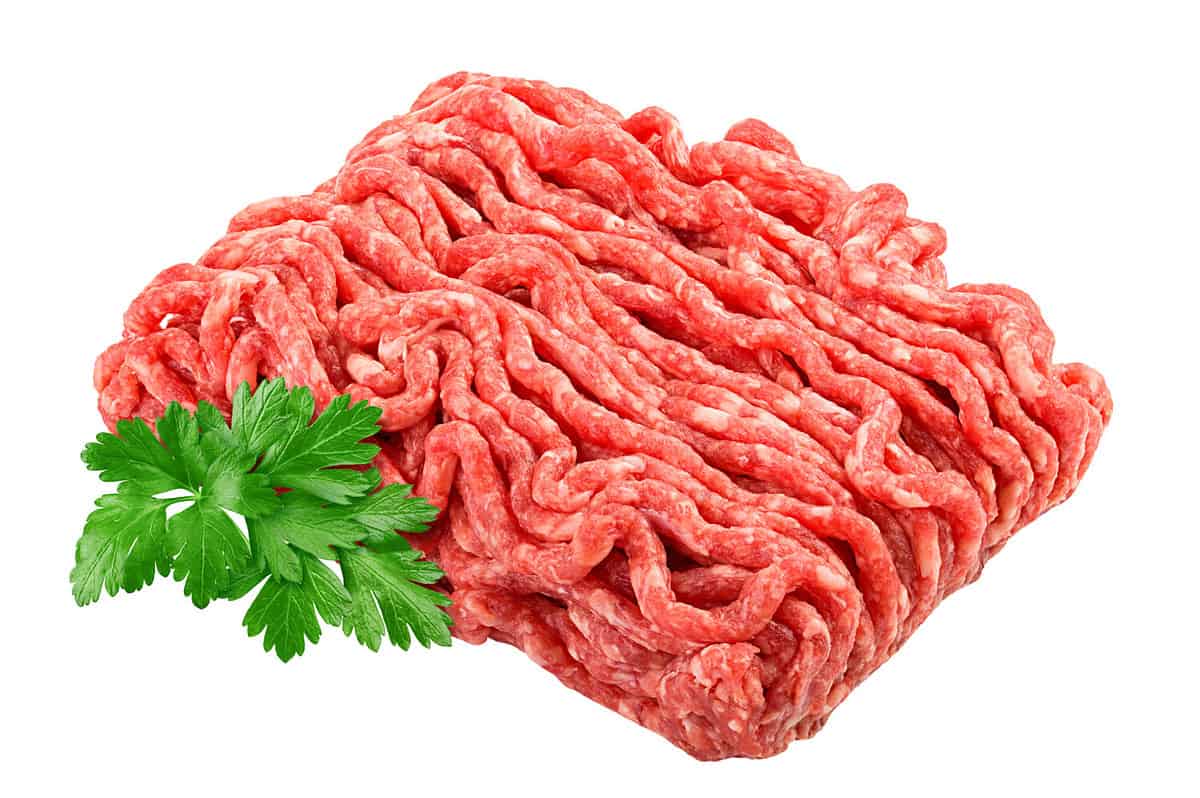
Ground beef comes from a particular section of the cow.
©grey_and/Shutterstock.com
What is Steak?
Steak is a specific cut of meat that can be obtained from various sources. Steak can be obtained from a cow, making it beef. However, steak can also be obtained from tuna, salmon, and even pig. There are also different steaks made from animals such as camel, goat, horse, and even kangaroos. Steak typically is meat cut from the muscle of any animal. Many people assume that when discussing steak, it is the beef steak that is being talked about. Typically, when speaking about steak, it is synonymous with beef. However, not all beef is steak, and not all steak is beef, as one can see.
The History of Steak
Steak has its historical roots back in Scandinavia. The original word that historians connect to modern-day steak is “steik,” a Nordic word. The word describes a thick slice of meat that was eaten during the 15th century. However, there are also those who derive steak's origin back to Italy during the Renaissance Period. Italians cooked “bistecca” for large, formal gatherings, much like the way we do in modern-day culture.
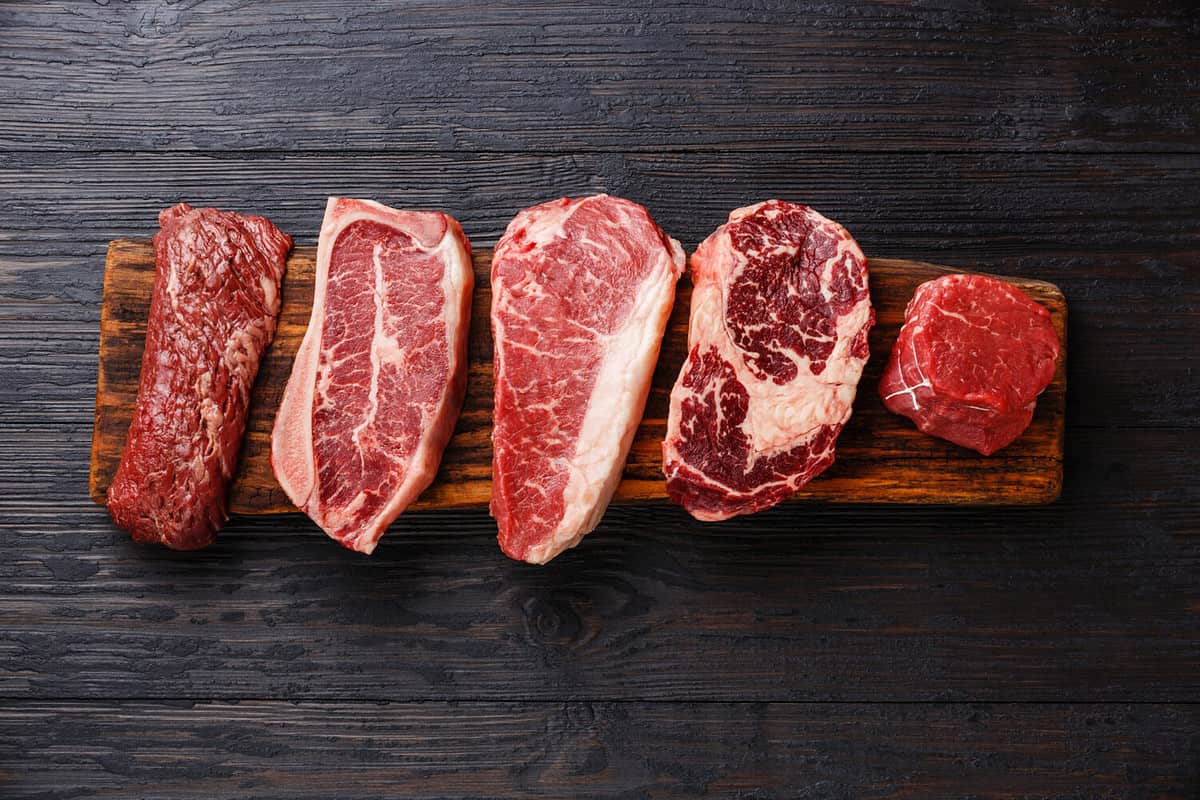
Depending on where the steak is cut from, it can be tough or tender.
©Natalia Lisovskaya/Shutterstock.com
Types of Steak
When considering beef steak, there are many different types and cuts that can be purchased or ordered at a restaurant. Each cut usually coincides with which part of the cow it comes from. Different cuts of steak can be more tender, while others can be tougher.
Ribeye
Ribeye steak comes from the center of the rib section of the cow. It can be ordered and purchased either with the bone still in or boneless. Ribeye steaks are very tender, and should be cooked usually medium to medium rare. This cut of steak usually does not require a marinade because of the marbling on it.
Porterhouse
Porthouse steaks and T-bone steaks are a two-for-one special. These cuts of steak have two different cuts in one, the tenderloin and the strip section of the steak. Porterhouse steaks and T-bone steaks always come with the bone still in, making it easy to separate the two parts. These steaks don't require marinade, as well.
Skirt
The skirt steak is a thinner steak that is long and flat and is cut from the stomach section of a cow. It happens to be a tougher cut of meat, so cooking it takes patience and effort to ensure it is not overcooked. Skirt steaks taste best when they are marinated.
Filet Mignon
Filet mignon is a thick, fatty cut of meat that is taken from the beef tenderloin. It happens to be a popular steak to order at steakhouses and is quite pricey, too. It is incredibly tender and when cooked correctly, can be cut easily. Not many chefs will marinade a filet mignon, but they will top it off with a nice sauce or butter.
The Rundown
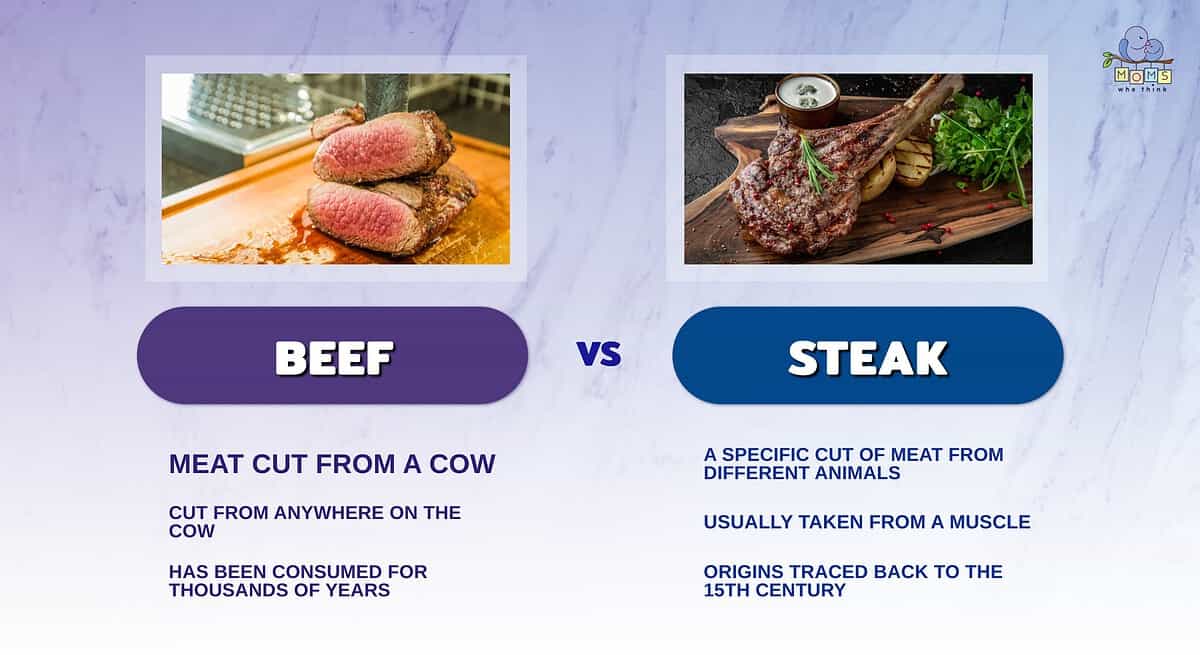
- Beef is always meat cut from a cow. While many people think of beef steak when they hear the word “steak”, steak can come from a variety of animals. Pigs and tuna are just two examples!
- Steak is a specific cut, usually from a muscle. Beef can come from anywhere on the cow.
- It is believed that beef has been consumed since 8000 B.C., while steak has been consumed since the 15th century. Some historians believe that steak's roots may go back to the Italian Renaissance instead.
While steak and beef are sometimes used interchangeably, the two are not always one and the same. Steak can be beef, and beef can be steak, but they are not always the same. Beef can account for any meat that is taken from a cow, while steak can be any meat taken from any animal, not just a cow.
Thinking of having steak for dinner next week? Try this great steak and noodles recipe:
Print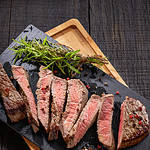
Healthy Steak and Noodles
- Yield: 6 servings
Ingredients
1¼ pounds beef top sirloin steak, cut into thin strips
2 medium onions, chopped
1 jar (4½ ounces) sliced mushrooms, drained
¼ teaspoon salt
⅛ teaspoon pepper
1 garlic clove, minced
1 Tablespoon butter
2 cups condensed beef consommé, undiluted
4½ teaspoons Worcestershire sauce
1 teaspoon dried basil
3 Tablespoons all-purpose flour
¼ cup cold water
6 cups hot cooked yolk free noodles
Instructions
1. In a large nonstick frying pan over medium heat, cook the beef, onions, mushrooms, salt, pepper and garlic in butter for about 7 minutes or until the meat is no longer pink.
2. Add the consommé, Worcestershire sauce and basil; bring to a boil.
3. Reduce heat; cover and simmer on low heat for about 45 minutes. The mixture should bubble slightly without boiling.
4. Combine flour and water, whisking until smooth; add to the beef mixture. Bring to a boil; cook and stir for an additional 2 minutes or until thickened.
5. Serve over noodles.
Nutrition
- Serving Size: ½ cup meat mixture with 1 cup noodles
- Calories: 451
- Sodium: 798mg
- Fat: 13g
- Saturated Fat: 5g
- Carbohydrates: 44g
- Fiber: 4g
- Protein: 37g
- Cholesterol: 79mg
The image featured at the top of this post is ©YARUNIV Studio/Shutterstock.com
